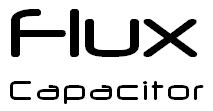We’re going way beyond innovation here. Instead of the latest technology, we’re getting a tantalising glimpse of something that doesn’t yet exist, but is making exciting progress in the lab and would be responsible for enormous advances in many fields of science and technology if it fulfils its promise.
Despite being hampered by the occasional unreadable slide, this talk eventually gathers enough momentum to constitute one of the all-time greats: even the Q & A at the end is full of profound and insightful questions, often challenging the presenter in new and unexpected ways.
The big shock for most science fiction enthusiasts will be that the flux capacitor (of Back to the Future fame) is real, and is not a fictional piece of equipment, and that Chris McGuinness claims that he has used them in his work (although not, he assures us, for time travel). Wikipedia nonetheless, at the time of writing this posting seems to be treating them as being fictional (comments please!).
The Large Hadron Collider itself does get quite a few mentions in the talk, and if you’re wondering whether his tiny future chip will eventually render such vast machines obsolete, he talks about an option to make enormous numbers of those chips and then to potentially use them as a lining for the inside of a giant accelerator to improve its performance.
The talk was called:
Particle Accelerator on a Chip
It was given by Christopher McGuinness, Advanced Accelerator Research Department (AARD) SLAC (Stanford Linear Accelerator Center) National Accelerator Laboratory, on Tuesday, May 24, 2011
The project that Chris is working is based there, but as he mentioned, there are related projects, including those at the Max Plank Institute Quantum Optics Team, the SonicMEMS laboratory at Cornell University as well as the Particle Beam Physics Laboratory at UCLA.
Early in the video, Chris pays tribute to the legendary Bob Siemann, so it is probably worth including the announcement below:
Chris McGuinness Named First Bob Siemann Fellow
Chris McGuinness, a graduate student in Stanford University‘s Department of Applied Physics who is conducting thesis work at SLAC, has been named the inaugural Robert H. Siemann Graduate Fellow in physics.
“I feel honored that [the physics faculty] decided I’m worthy of this fellowship,” said McGuinness, who worked under Siemann from 2006 through 2008. “Bob was my advisor, so I already felt that I had to represent his effort and his work; with this fellowship, I feel that even more. I have to live up to Bob.”
“I’m not a scientist, I don’t have his personality—I can’t do what he did. But I can enable someone else to do it.”
Hannah Siemann,widow of the late great particle physicist Bob Siemann, who has endowed a new physics fellowship for graduate students
McGuinness said that won’t be an easy task. Siemann, who passed away in September 2008, was a recognized leader in accelerator physics. He was instrumental in creating the peer-reviewed journal Physical Review Special Topics – Accelerators and Beams, and played an important role in the accelerator physics of the Stanford Linear Collider. Siemann later established a department at SLAC specifically devoted to long-term accelerator research with an emphasis on educating graduate students.
Siemann is best remembered for his dedication to teaching and mentoring the next generation of scientists. His former students praise his rigorous teaching style, which forced them to make their own decisions, as well as his unwavering commitment and support.
It was because of his enthusiasm for his students that Siemann’s widow, Hannah, decided to endow the fellowship. “By the time I got home from the hospital after he died, I knew I was going to do this; I had to do it,” she said. “Students were a huge part of my husband’s life. He really cared about them and about setting them up to succeed. I hope to continue this with the fellowship. I’m not a scientist, I don’t have his personality—I can’t do what he did. But I can enable someone else to do it.”
Beginning with McGuinness, the fellowship will fund outstanding physics graduate students conducting research at SLAC or in the fields of high energy, particle or accelerator physics at Stanford for two years each.
“I’m so thrilled that Chris is the first Siemann fellow,” Hannah Siemann said. “I can see my husband’s work ethic in Chris—just the way he feels about what he’s doing. That’s something my husband drilled into his students: to be very serious when they’re working but to play hard too. Future fellows are going to have to work to keep it at the Siemann–McGuinness level!”
McGuinness’ PhD work, which he began in collaboration with Siemann, focuses on designing ways to accelerate electron pulses with visible light. He’s been developing methods for fabricating nano-structures made of silicon using semi-conductor processing equipment at the Stanford Nanofabrication Facility. The end goal is smaller, less expensive particle accelerators on a chip.
“I’m very pleased to receive the fellowship, and to be associated with Bob in this way,” McGuinness said. “I look forward to finishing the work we started together.”
—Kelen Tuttle


